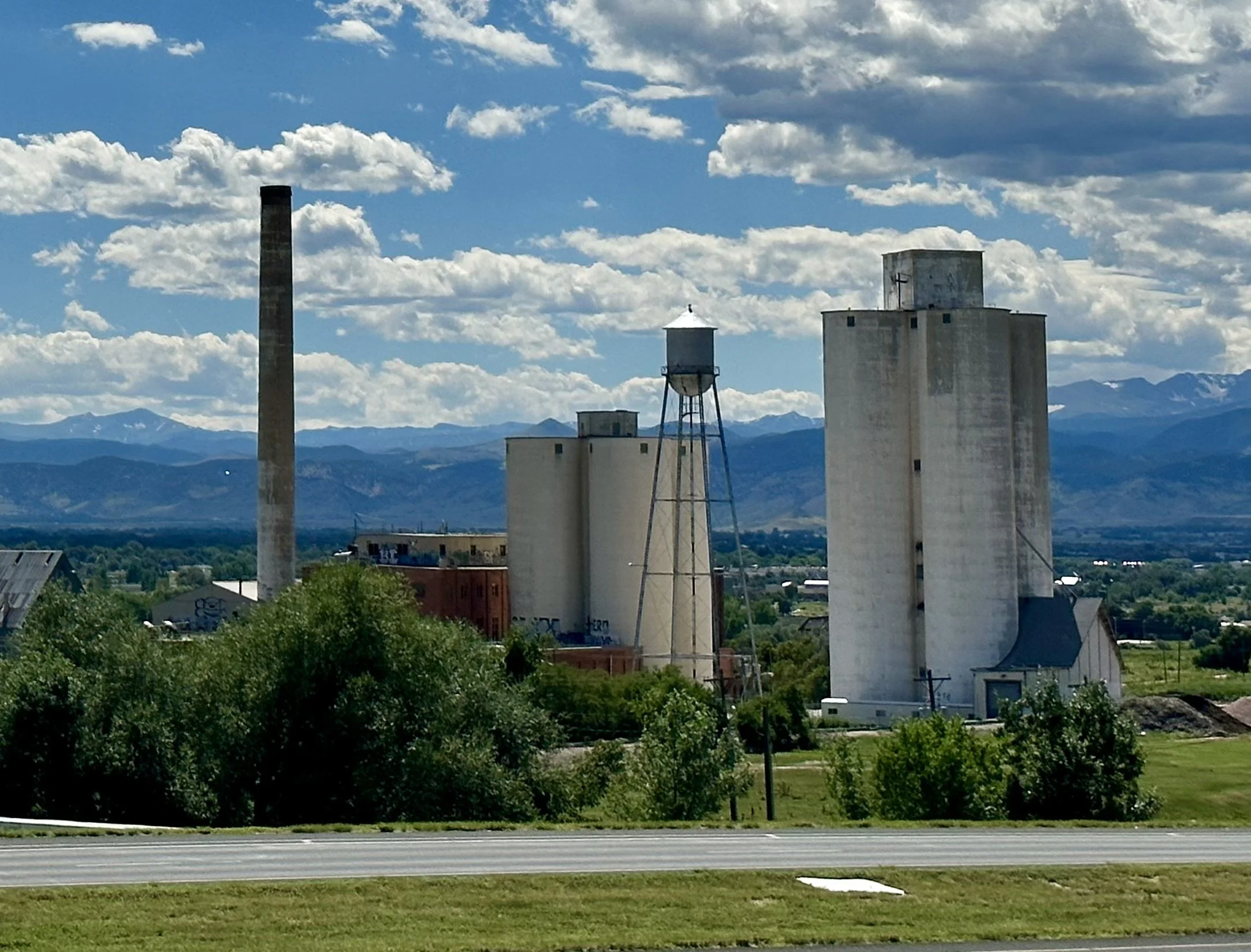Managing How and Where Longmont Grows
Longmont is quickly becoming the largest city in Boulder County. We need to take control of our future instead of letting development ‘happen’ to us. As a city, we need to proactively manage how and where we grow to transform our old industrial sites into future residential and retail centers and a true eastern gateway to Longmont. This will preserve our city’s character and open spaces, reduce development pressures from existing neighborhoods, increase housing options for all residents, support our growing community of small businesses, and slow traffic growth. We can achieve this.
As your city councilmember, Matthew will:
Prioritize redeveloping Longmont’s old industrial areas
Expand and support transportation options that make sense for Longmont locally and regionally
Prioritize Redeveloping Old Industrial Areas
Create an “Urban Renewal Innovation Zone”: Make it easier to redevelop former industrial areas to prioritize and attract new mixed-use development where it makes sense - like our brownfield sites including the Sugar Mill, lower downtown by 1st and Main, and the River District – to attract innovative developers and better-paying jobs. Matthew has already proposed and secured council support for this concept in May 2025 and will continue working to implement this.
Fully Embrace Longmont’s Urban Renewal Toolbox: Invest in site cleanup and new infrastructure without raising taxes by using urban renewal financing and federal environmental cleanup funds. As the new chair of Longmont’s Urban Renewal Authority, Matthew is actively working with City staff to do this and support negotiations with developers and property owners.
Reduce Development Pressures on Existing Neighborhoods: Shift multi-family and mixed-use developments into our downtown industrial areas and around the planned transit station at 1st and Main. In addition, we can reduce the maximum density allowed in residential mixed neighborhoods, like the current zoning for Bohn Farm and the Quail Road annexation proposal, from 18 to 16 units per acre. What do these types of density look like? It depends on design, but here are representative examples. For context, the VerraWest apartment complex next to Bearded Brewer is 20 units/acre, the southeast area of Prospect is 18 units/acre, and the Fox Ridge apartment complex off of Airport Road is 16.5 units/acre.
Oppose the Kanemoto Estates Development Proposal: This site at the southeast end of Airport Road is zoned for rural land uses and has an active Conservation Easement. The proposed development does not align with Longmont’s own previously-established land use goals and zoning. I will not support this development because it would fail to respect all the community input that went into our long-term comprehensive planning and detract from redeveloping our urban renewal areas.
“When done effectively, rehabilitating these former industrial sites — already in prime locations near infrastructure, businesses, and trails — is exactly how we can attract much-needed housing, welcome new customers to support our existing businesses, create new workforce and economic development opportunities, and ultimately turn Longmont’s industrial past into an innovative future.”
Expand and Support Transportation Options
Create Bus Service from Longmont to DIA: Work with RTD, Via (RIDE Longmont partner), or another provider to establish a dedicated bus line to Denver International Airport by reevaluating current bus routes and needs within Longmont and collaborating with neighboring cities to offer affordable, convenient access to DIA. This also directly relates to how we can make it more affordable to travel for work, pleasure, or other needs and how we can prepare for all the new Sundance Film Festival visitors while reducing increases in traffic and air pollution. This is a common-sense and highly desirable bus route that supports all residents, employers and employees, friends, family, and other visitors.
Protect Cyclists and Non-Cyclists as E-Bikes Grow in Popularity: To support the rapid increase in e-bikes, we need to prioritize more protected bike lanes that connect our community and are already outlined in our Transportation Mobility Plan. We also need to re-evaluate our rules for and enforcement of e-bikes and other “toy vehicles” in areas where they are hazardous to keep everyone safe. Matthew already asked the Planning and Zoning Commission to study the growth in e-bikes, but this needs to be an explicit priority of the broader Vision Zero effort to eliminate traffic-related deaths and serious injuries while also extending this newer, convenient transportation option that reduces cars on the road.
Embrace Regional Bikeshare: Support implementation of current plans to bring a regional docked bikeshare system to Longmont (in partnership with other Boulder County communities) and require denser developments to fund new bikeshare stations to provide convenient, non-car options that reduce traffic. This will be even more important as the Sundance Film Festival comes to Boulder.
Get the Train On Track or Pursue Other Ways to Recoup Our Investment: Support current efforts with CDOT, RTD, and Front Range Passenger Rail to finally connect passenger rail to Downtown Longmont by 2029 after decades of Longmont residents paying RTD for promised rail lines and getting nothing for it. This will help concentrate new development in lower downtown where we already have existing infrastructure to support people, bikes, and vehicles. If current efforts do not succeed, Longmont should work with the Governor’s office to hold RTD accountable for this breach in public trust and require that RTD invest the nearly $100 million in FasTracks funding that Longmont residents have already contributed to accelerate implementation of our Transportation Mobility Plan.



